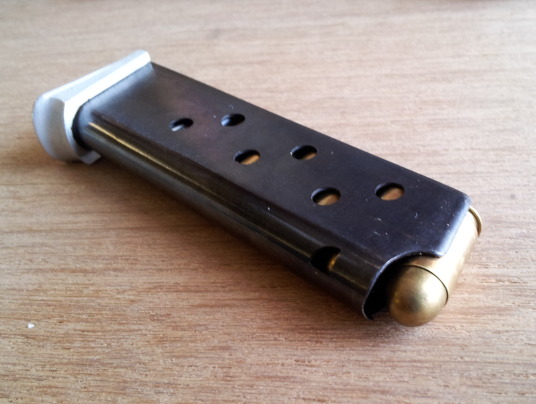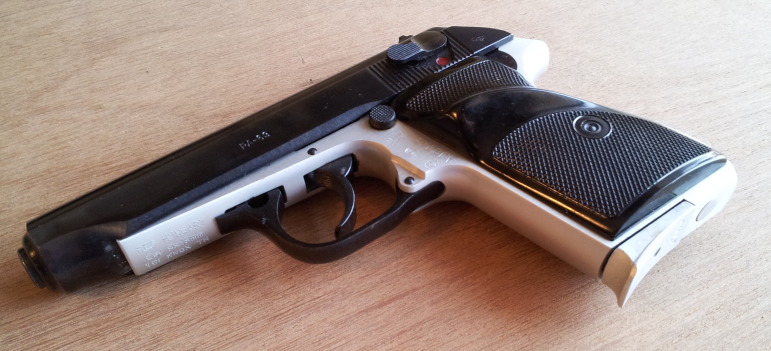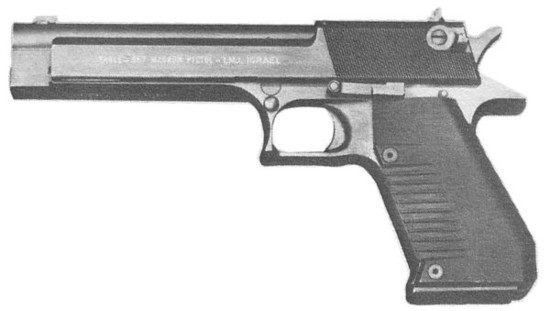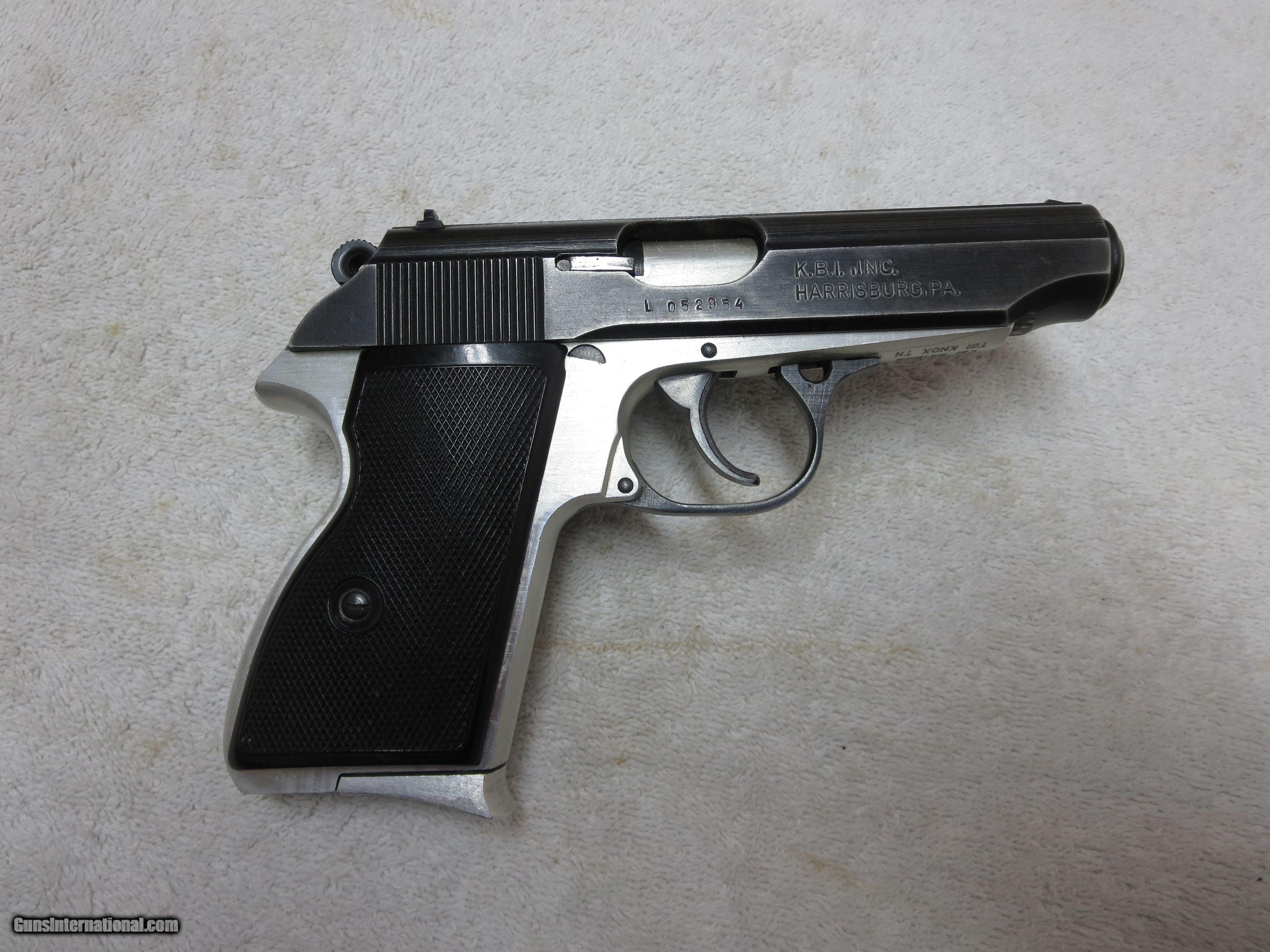- Feg P9r Serial Numbers
- Feg Pa 63 Serial Number Lookup Tool
- Feg Pa 63 Serial Number Lookup Free
- Serial Number Lookup Warranty
- Feg Pa 63 Serial Number Lookup Chart
On the other hand, if someone else has a PA-63 with more than 4 digits in its s/n, then the number of pistols per block and series is simply increased. Some arms manufacturers will 'fill-out' low numbers with leading 0s to fit the number of digits per s/n (ie, '0001' is the first s/n), while others will just start with '1' and go until the. Helwan Brigadier FEG R-9 FEG PPH Mark II AP Mark II APK Mauser Parabellum Karabiner Mauser Parabellum Cartridge Counter Virginian Dragoon Stainless Dragoon Virginian Dragoon Silhouette Dragoon Deputy Virginian.22 Convertible.
- While the Hungarian FEG PA-63 pistols and its variants are, as a general rule reliable, well-constructed quality weapons, they are nonetheless pre-owned, used and out of production firearms. Initial manufacture began in the 1960s, and any pistol purchased today must be viewed as not having been examined by a qualified professional for some time.
- See full list on hungariae.com.
The FÉG PA-63 Pistol
The FÉG PA-63 pistol is a surplus firearm from Hungary. It's a slight modification of the Walther PP design, firing the 9x18mm Makarov cartridge with a reliable blowback operation. The FÉGARMY national arms factory developed the PA-63 for the Hungarian military and police starting in the late 1950s. It was the national standard military and police sidearm from 1963 until 1996, and in the 2010s it was still in service with the police.
Precursors of the PA-63
The German arms company Walther released their Polizeipistole or 'Police Pistol' in 1929, marketing it as the Walther PP. A variant with a shorter grip and barrel was released in 1931. Smaller overall, with one less round in the magazine, it was designed to be more concealable and thus more useful for undercover or plainclothes police work. This smaller version was the PPK for Polizeipistole Kriminalmodell with Kriminalmodell referring to the Criminal or Detective division of German police forces.
FÉG PA-63 pistol and magazine of 9x18mm Makarov ammunition.
Both models became popular with both police and civilians throughout Europe, and they were issued to members of Germany's military and police throughout World War II.
Two arms factories, Walther Arms and J.G. Anschutz, were based in the small town of Zella-Mehlis in Thuringia, in central Germany, in the 1930s into World War II. Walther utilized slave labor at the Neuengamme concentration camp in 1942 until the Soviet army seized the area in 1945, destroying Walther's factories. Thuringia was then occupied by the Soviet Union after the war, making it part of the DDR or Deutsche Demokratische Republik, or simply East Germany. Walther Arms company then restarted manufacturing in 1953 in Ulm, Baden-Württemberg, in southern West Germany.
Meanwhile, the Hungarian national arms company FÉGARMY had begun manufacturing PP and PPK clones in the late 1940s.
The Hungarian company Fegyver- és Gépgyártó Részvénytársaság or the 'Arms and Machine Manufacturing Company' had been founded in Budapest in 1891. In 1935 it was renamed as the 'Metalware, Arms and Machines Factory' or Fémárú, Fegyver- és Gépgyár. At times it was known as the FÉGARMY Arms Factory Ltd. or FÉGARMY Fegyvergyártó Kft., and as the 'Arms and Gas Equipment Factory' or Fegyver- és Gázkészülékgyár, the last of those because they also manufactured most of Hungary's residential water heaters used in the large multi-story apartment blocks.
Let's just call them FÉG...
FÉG started manufacturing a near-clone of the Walther PP in the late 1940s, making only a few very minor changes and calling it the Model 48.
The Hungarian People's Army was using the Soviet Tokarev TT-33, which they called the 48.M (and that must have been awfully confusing given the 'Model 48'). The TT-33 fired the 7.62x25mm Tokarev cartridge. The Soviet Union had standardized on this cartridge by the outbreak of World War II.
Soviet military doctrine called for using ammunition incompatible with that of their adversaries, leading to the 7.62x25mm Tokarev cartridge. It then imposed that standard on its Eastern European satellites in the years immediately following the war.
The 9x18mm Makarov cartridge was designed in the Soviet Union in 1946. It soon became the Warsaw Pact standard round for pistols and submachine guns, analogous to NATO'S 9x19mm Parabellum.
Here you see a PA-63 magazine loaded with 9x18mm Makarov ammunition.
The PA-63 is Not a Makarov
The PA-63 is often marketed in a confusing way in the U.S., listed as a 'PA-63 Makarov'. The FÉG PA-63 fires 9x18mm Makarov ammunition, and the PA-63 and the Makarov PM pistol fire the same round and are based on the same Walther PP/PPK design. But the PA-63 and the Makarov PM pistols are entirely different guns, from different countries, with no parts in common.
The US BATF requires that the importer make further permanent marks on surplus firearms. Tennessee Guns International has placed the importer markings on the bottom of the frame in front of the trigger guard.
The original manufacturer's serial number and the inspection and acceptance marks are on the side of the frame directly behind the trigger. Those are barely visible here, see below for an explanation of the PA-63 markings.
The PA-63 is a little awkward to field strip. Take advantage of that hole in the forward end of the trigger guard, and use a wooden chopstick for a little easier breakdown of the pistol into its major components.
From the Walther PP to the FÉG PA-63
FÉG further modified the Model 48, transitioning to the 9x18mm Makarov cartridge and making other changes. The result was the PA-63 design which was officially adopted by the military in 1963. The changes included an aluminum alloy frame for decreased weight. A small amount of titanium was included in the alloy, maybe 0.05%, to improve durability. The military model left the frame 'in the white', with the alloy in its original color. A highly reflective frame isn't optimal for military use, but it simplifies manufacturing. Later export models anodized the frame to a dark color close to that of the blued steel slide.

Meanwhile other countries were producing their own PP/PPK derivatives, including the Soviet Union's Makarov, Czechoslovakia's ČZ-50 or Česká Zbrojovka vzor 52, Spain's Astra Constable, and others.
The differences, other than the cartridge for which they are chambered, are fairly minor. The Walther PP and FÉG PA-63 magazines are very similar, but they are not interchangeable. There are slight differences in the magazine latches and in the mechanisms to lock the slide open on an empty magazine. The other differences have to do with safety features.
Both the PP and the PA-63 have decocking safeties. However, the PA-63 has a passive firing pin safety. The PP does not.
The PP has a passive hammer block, while the PA-63 does not. Instead, the PA-63 firing pin is below the line of the hammer face when the hammer is not cocked; cocking the hammer raises the rear of the firing pin. The result is that in both guns, for different reasons, the hammer does not contact the firing pin while uncocked.
The PA-63 weighs just 540 grams unloaded, or 600 grams with a full load. This is significantly lighter than the all-steel PP or Makarov PM, making for increased recoil force.

FÉG PA-63 Markings
'PA-63' appears on the right side of the slide.
The serial number and other markings are on the left side of the frame, between the trigger guard and left grip panel.

Typical PA-63 serial numbers consist of two letters and four digits.
A small Hungarian national crest containing a two-digit date serves as an acceptance mark.
An 'M' in a circle and an 'I' within a heart-shaped mark are inspection marks.
The grips make for a non-ambidextrous design. The left grip panel has a prominent thumb rest. After-market grips are, of course, available.
FÉG PA-63 Users
The pistol was used by the Hungarian police, and in 1963 it was designated the PA-63 as it became the official sidearm of the Magyar Honvédség or the Hungarian Defence Force.
The PA-63 was basically a clone of the PP, a pistol designed for concealment within a pocket or under a coat. The original design was not intended for military service.
But the PA-63 remained the standard military sidearm until 1996. The military transitioned then to the P9RC firing NATO-standard 9x19mm Parabellum with a 14-round magazine. The P9RC in military service was designated the '96.M'. Some of the Hungarian police have also transitioned to the P9RC, but but the PA-63 has remained in police service.
FÉG PA-63 Variants and the End of FÉGARMY
The FÉG AP9 is chambered for .32 Auto or 7.65 mm.
The FÉG PPH or PMK-380 is chambered for .380 ACP.
FÉGARMY Fegyvergyártó Kft. went bankrupt in 2004, when its traditional export market was mostly placed under embargo.
Some PA-63 enthusiasts round the lower rear corners of the slide to reduce the likelihood of injury. The small 'spur' at the top of the rear of the grip plus the relatively high recoil could easily allow the gun to rotate upward enough for the cycling slide to strike and cut the web between your thumb and trigger finger.
Feg P9r Serial Numbers
Others replace the return spring, which goes around the barrel, with a stiffer one to replace the felt recoil. Midway USA sells Wolff springs for the PA-63, including a 15-pound return spring to reduce recoil and a set of 9-, 11-, and 13-pound hammer springs to reduce the trigger pull.
Now that you've had an introduction to the PA-63, you may want to learn more about how to maintain it and how to use it.
How to field strip
the PA-63 9x18mm Makarov
Ammunition
Learn how to field strip the FÉG PA-63 into its major components for cleaning.
WARNING: All content on this web site, including technical data, information, and reports of any activities, do not detail the comprehensive training, procedures, techniques, and safety precautions which are absolutely necessary to properly carry out similar activity. The reader MUST NOT attempt any reported activity, technique, or use of equipment based on reports on this web site. Always consult comprehensive reference manuals for details of proper training requirements, procedures, techniques and safety equipment and precautions before attempting any similar behavior.
PRIVACY POLICY: This site has no forms where you could enter your name. This server does not set cookies. This site does include ads from Google Adsense and Amazon, and they set and use cookies. Ads appearing here may reflect your recent Amazon browsing and Google searches.
| FÉG PA-63 | |
|---|---|
| Type | Semi-automatic pistol |
| Place of origin | Hungary |
| Service history | |
| In service | 1963–present |
| Used by | Hungarian Police Iraq |
| Wars | Iraq War |
| Production history | |
| Designer | FÉG |
| Designed | Late 1950s |
| Manufacturer | FÉG |
| Produced | 1963–1990 |
| Variants | FÉG AP7.65, FÉG PMK-380, FÉG AP9, FÉG PPH |
| Specifications | |
| Mass | 595 g (21.0 oz) |
| Length | 175 mm (6.9 in) |
| Barrel length | 100 mm (3.9 in) |
| Cartridge | 9×18mm Makarov, .32 ACP (7.65mm Browning), .380 ACP (9mm Short) |
| Action | blowback |
| Muzzle velocity | 315 m/s (1,033 ft/s) |
| Effective firing range | 50 m (164 ft) |
| Feed system | 7-round detachable box magazine |
| Sights | blade front, notch rear |
Feg Pa 63 Serial Number Lookup Tool
The FÉG PA-63 is a semi-automatic pistol designed and manufactured by the FÉGARMY Arms Factory of Hungary.

History[edit]
Feg Pa 63 Serial Number Lookup Free
FÉGARMY Arms Factory (FÉG) of Hungary started producing Walther PP/PPK clones in the late 1940s starting with their Model 48 which differed from the Walther PP only in minor details. By the late 1950s FÉG began making broader changes resulting in the PA-63, which uses the 9×18mm Makarov round. It quickly became standard issue to both Hungarian military and police forces.
The military standard PA-63 version sports a two-tone polished aluminum frame with black slide, grips, trigger and hammer assembly.[1] While unusual for military issue in that a reflective polish was used, it was chosen due to its relative cheapness as well as quicker build time.[2]
After the fall of communism in 1990, the Hungarian army and police units initiated a program to replace the PA-63 with pistols using the NATO-standard 9×19mm Parabellum cartridge, first the imported Jericho 941, followed by the domestically produced P9RC, but the PA-63 is still in service in Hungarian law enforcement. It has been largely phased out in Hungary, but due to the large number produced, they are a popular and affordable surplus firearm since they have begun to be imported to the west.[citation needed]
Variants and derivatives[edit]
Due to the PA-63's popularity and relative durability, FÉG later issued models using .32 ACP and .380 ACPcaliber rounds, the FÉG AP7.65 and PMK-380 respectively.[1] The AP7.65 is almost identical to the PA-63 except that it is chambered in 7.65mm Browning (.32 ACP) and is anodized not two toned. The PMK-380 is chambered in the .380 ACP cartridge with a blued titanium-aluminum alloy frame and blued steel slide.[3]
In 2000, FÉG began producing the Walther PPK/E under license from Walther. It is available in .22 LR, .32 ACP and .380 ACP.
The Makarov label[edit]
Serial Number Lookup Warranty
PA-63s sold in the United States are often advertised as 'PA-63 Makarov.' This can lead some consumers to believe they are purchasing a Makarov pistol instead of a different pistol chambered for the same 9×18mm Makarovcaliber. Though both pistols share lineage from the Walther PP/PPK, similar operating principles and use the same ammunition, the Makarov PM is a different design featuring all-steel construction and different lockwork. There are no parts in common between the FÉG PA-63 and the Makarov pistol.[1]
References[edit]
- ^ abcCutshaw, Charles Q. (28 February 2011). Tactical Small Arms of the 21st Century: A Complete Guide to Small Arms From Around the World. Iola, Wisconsin: Gun Digest Books. p. 86. ISBN978-1-4402-2709-7. Retrieved 10 July 2013.CS1 maint: discouraged parameter (link)
- ^John Ivor Headon Owen (1976). Warsaw Pact Infantry and Its Weapons: Manportable Weapons and Equipment in Service with the Regular and Reserve Forces of the Soviet Union, Bulgaria, Czechoslovakia, German Democratic Republic, Hungary, Poland and Rumania, and of Yugoslavia. Brassey's Publishers Limited. p. 34. ISBN978-0-904609-03-5.
- ^'Makarov.com - Other Pistols'. Retrieved 9 May 2012.CS1 maint: discouraged parameter (link)
Further reading[edit]
- Hogg, Ian V.; Walter, John (2004). Pistols of the World. David & Charles. ISBN0-87349-460-1.CS1 maint: discouraged parameter (link)
- Hartink, A.E. (2003). The Complete Encyclopedia of Pistols and Revolvers. Edison, New Jersey: Chartwell. ISBN0-7858-1871-5.